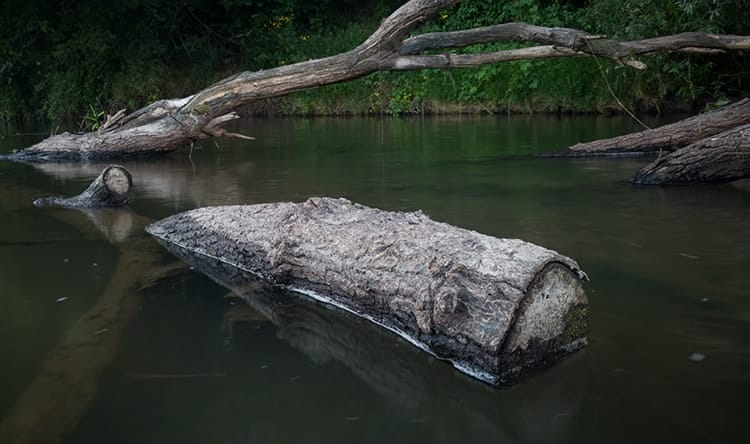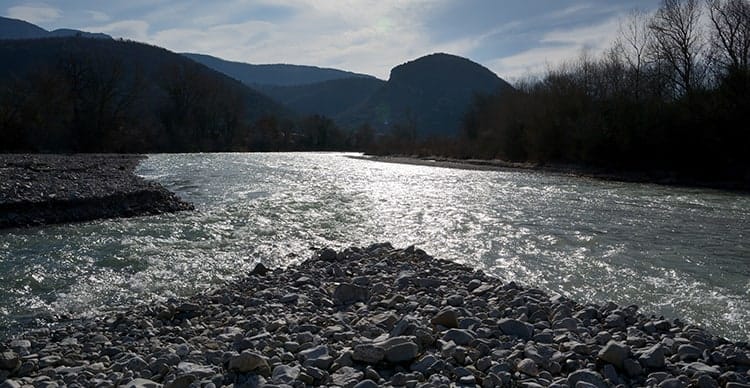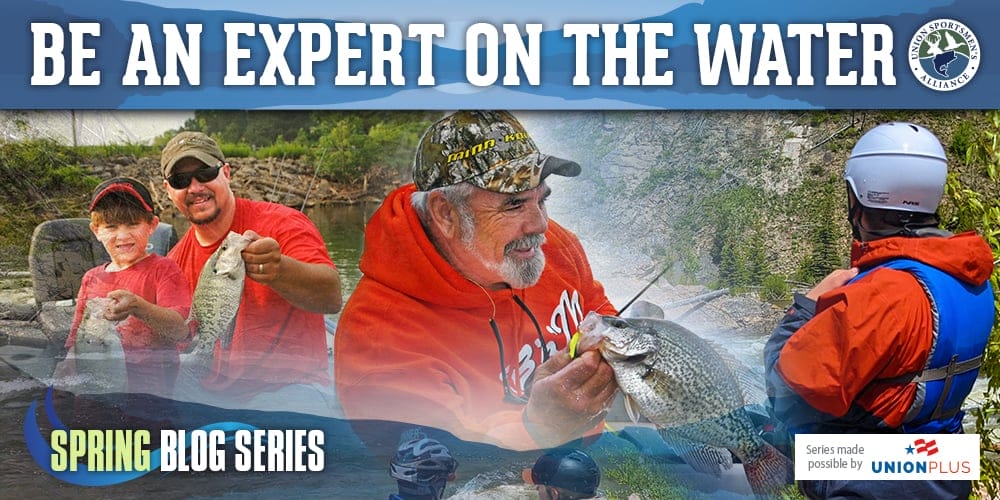How to Find Fish in Rivers
Don’t waste time fishing blank spots on a river. Fish are relatively predictable to find if you know where to look.
by PJ Delhomme
If I were a fishing superhero, my name would be Captain Hook, and my superpower would drain all of the water from a river for a few seconds so I could see where all the fish were stacked like cordwood. Daydreams aside, I’ll show you how to find fish without turning off the faucet. Let’s dive in.
Fish Like Structures
Most fish are food for other fish, birds, bears, otters, me, you—you get the idea. You want to feel safe when you’re at the bottom of the food chain. If you’re a fish, you hide around things like the branches of a submerged tree, weed beds, docks, and rocks. Find this kind of shelter, and you will find fish.

Find the shelter (like a submerged log), and you will find fish.
Trout Love Cold Water
Inlets are typically places where a creek or stream enters a larger body of water, like a river or lake. They are a variable buffet line for trout. Not only do these creeks introduce cold water (which fish like), but they introduce nutrients (food) into the main water body.

A tributary introduces cold water and nutrients to a river.
Find the Seams (see #1 below)
A seam is where two currents meet. For instance, in the example above, a creek that enters a river will create a seam, and you can see where they meet on the surface. Fish often hunker down on a seam and gobble up worms, larvae, and, hopefully, your lure.
Fish the Eddies (see #3 and #4 below)
Not to be confused with Cousin Eddy, eddies on a river occur when water flows around a rock or a bend. The water will swirl back upriver, slow down, and take a break from its downstream travel. These places are great for pulling over in a boat to take a break and even better for fishing. If you choose the latter, throw your lure into the current, so it travels naturally into the slow water of the eddy. And don’t discount the micro-eddies – those tiny eddies hiding behind large (or not so large) rocks. They may not be big enough for a boat, but they are plenty big enough for a fish.

Features to look for to find fish in a river.
Drift the Tailouts (see #2 above)
The end of a pool or run of riffles is called a tailout. It’s where the current slows down, and big fish hunker down, looking for an easy meal. Fish will sit behind a micro-structure like a rock, piece of wood, or even a wave of gravel that deflect the current just enough so those fish don’t expend much energy waiting for your lure to find them.
Remember that fish are looking for an easy meal and doing their best not to become one themselves. Find structure, cold water, seams, eddies, and tailouts, and you’ll find the fish.
PJ DelHomme writes and edits content from his home in western Montana. He runs Crazy Canyon Media and Crazy Canyon Journal.
More articles in our Be An Expert on the Water series!








